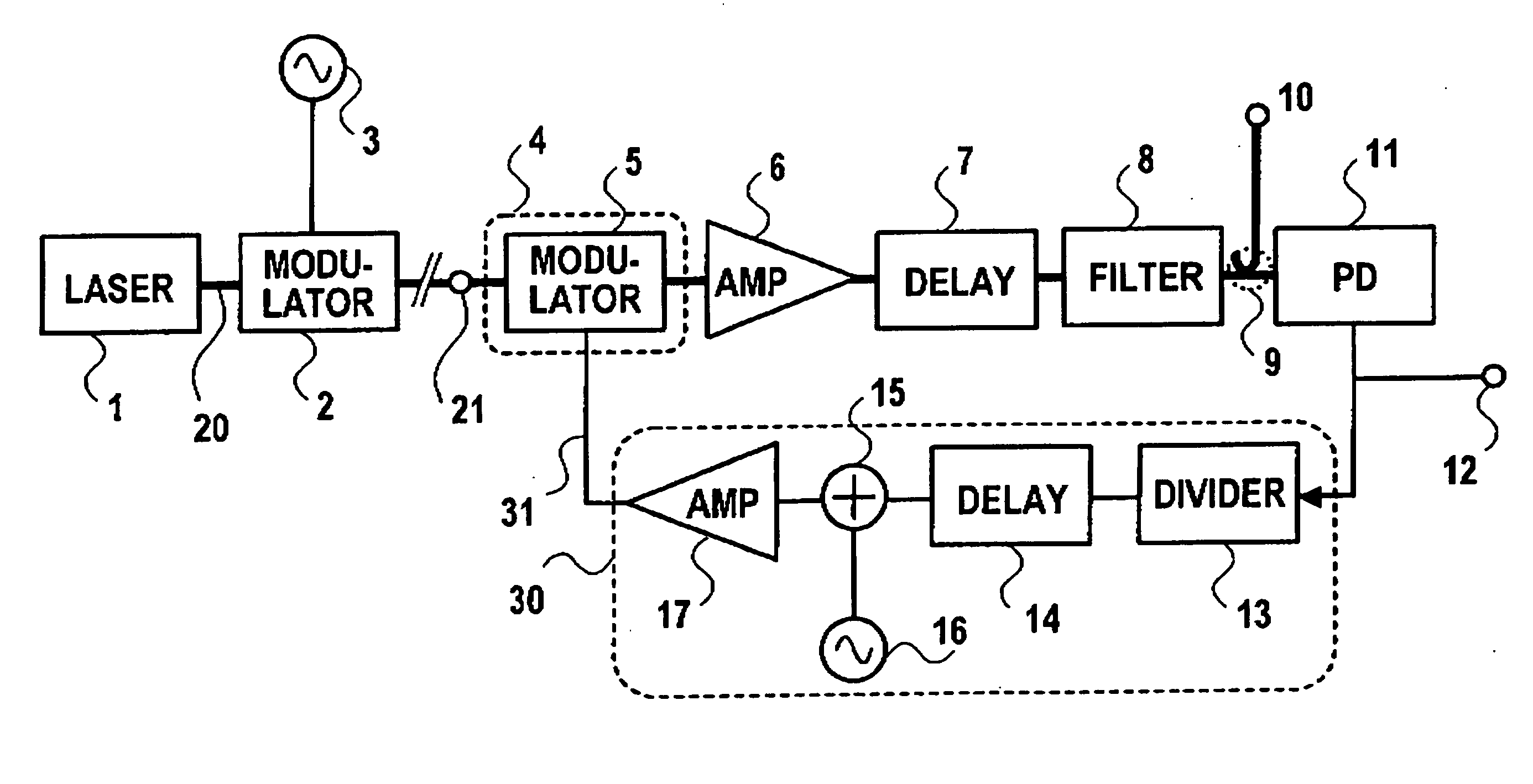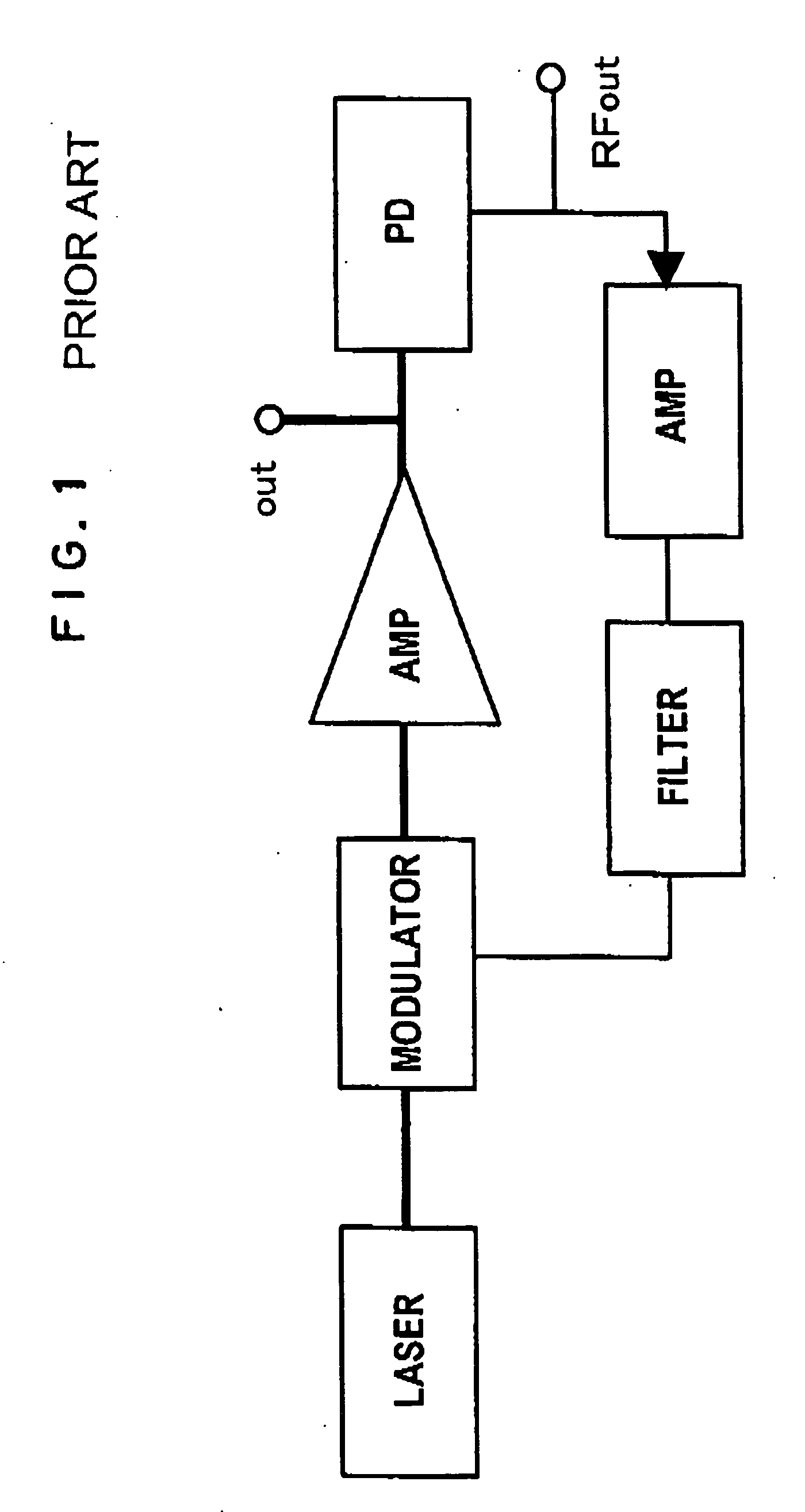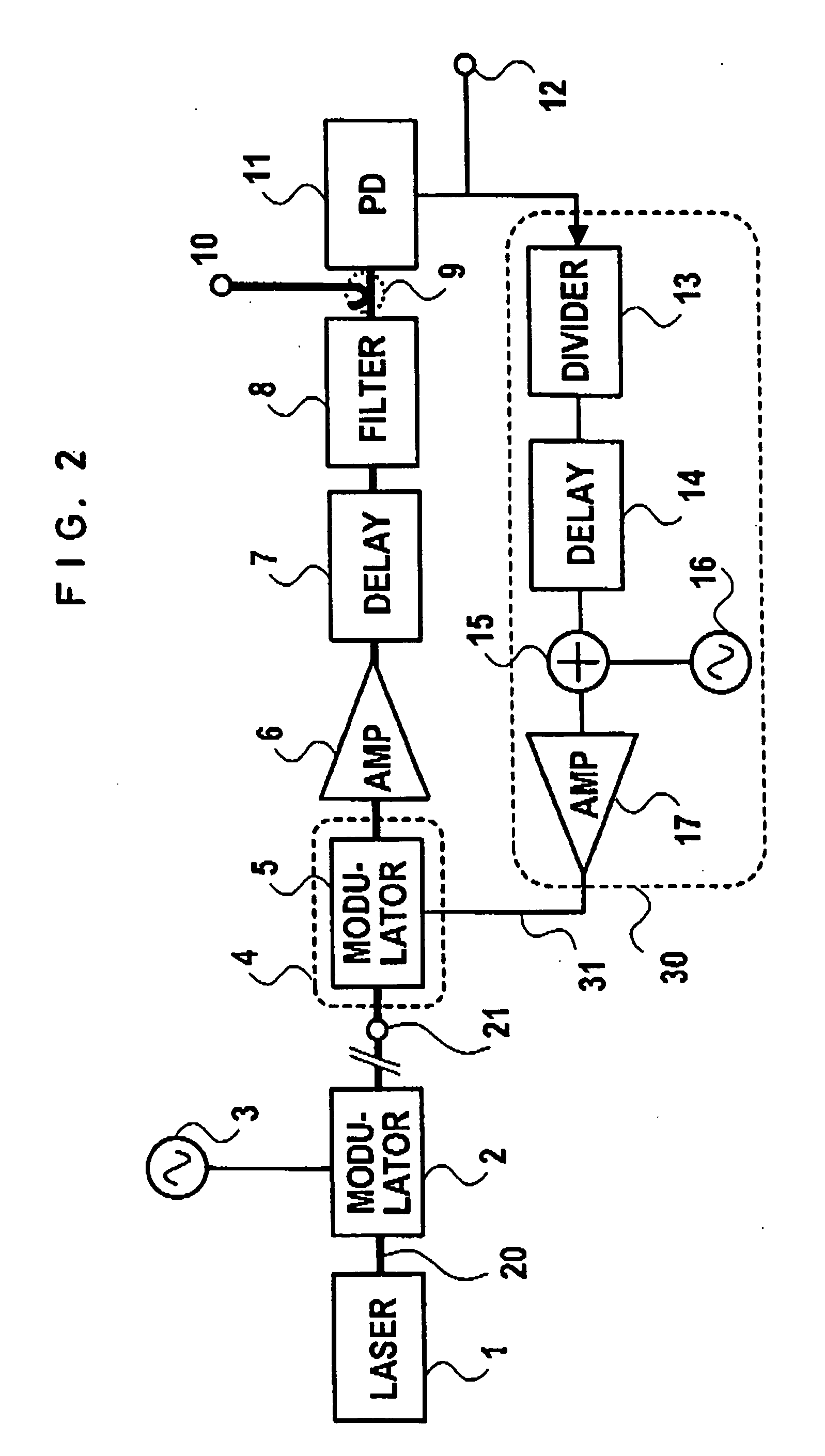Photoelectric oscillator
a photoelectric oscillator and oscillator technology, applied in the field of photoelectric oscillators, can solve the problems of difficult improvement of modulation efficiency, unavoidable complex configuration large so as to reduce the size of conventional photoelectric oscillators, shorten the modulator electrodes, and reduce power consumption.
- Summary
- Abstract
- Description
- Claims
- Application Information
AI Technical Summary
Benefits of technology
Problems solved by technology
Method used
Image
Examples
Embodiment Construction
[0078]FIG. 2 is block diagram showing a preferred embodiment of the present invention. A laser beam from a laser beam source 1 is modulated by an optical modulator 2. The modulation signal is supplied from an oscillator 3. This optical modulation is for inducing pull-in phenomenon in the photoelectric oscillator. When the pull-in phenomenon is not utilized, the optical modulator 2 can be omitted. The laser beam is projected from a projection unit 21 and supplied to an optical modulator 5. The optical modulator 5 is a resonant electrode optical modulator or a reciprocating optical modulator. The beam modulated by the optical modulator 5 is amplified by an optical amplifier 6 as required. Amplification is not necessary if the signal intensity is sufficient. After the beam has passed through the optical amplifier 6, it is sent to a delay circuit 7 to be delayed for a prescribed time period. The beam is then passed through an optical filter 8 to extract a signal in the frequency band us...
PUM
 Login to View More
Login to View More Abstract
Description
Claims
Application Information
 Login to View More
Login to View More - R&D
- Intellectual Property
- Life Sciences
- Materials
- Tech Scout
- Unparalleled Data Quality
- Higher Quality Content
- 60% Fewer Hallucinations
Browse by: Latest US Patents, China's latest patents, Technical Efficacy Thesaurus, Application Domain, Technology Topic, Popular Technical Reports.
© 2025 PatSnap. All rights reserved.Legal|Privacy policy|Modern Slavery Act Transparency Statement|Sitemap|About US| Contact US: help@patsnap.com



